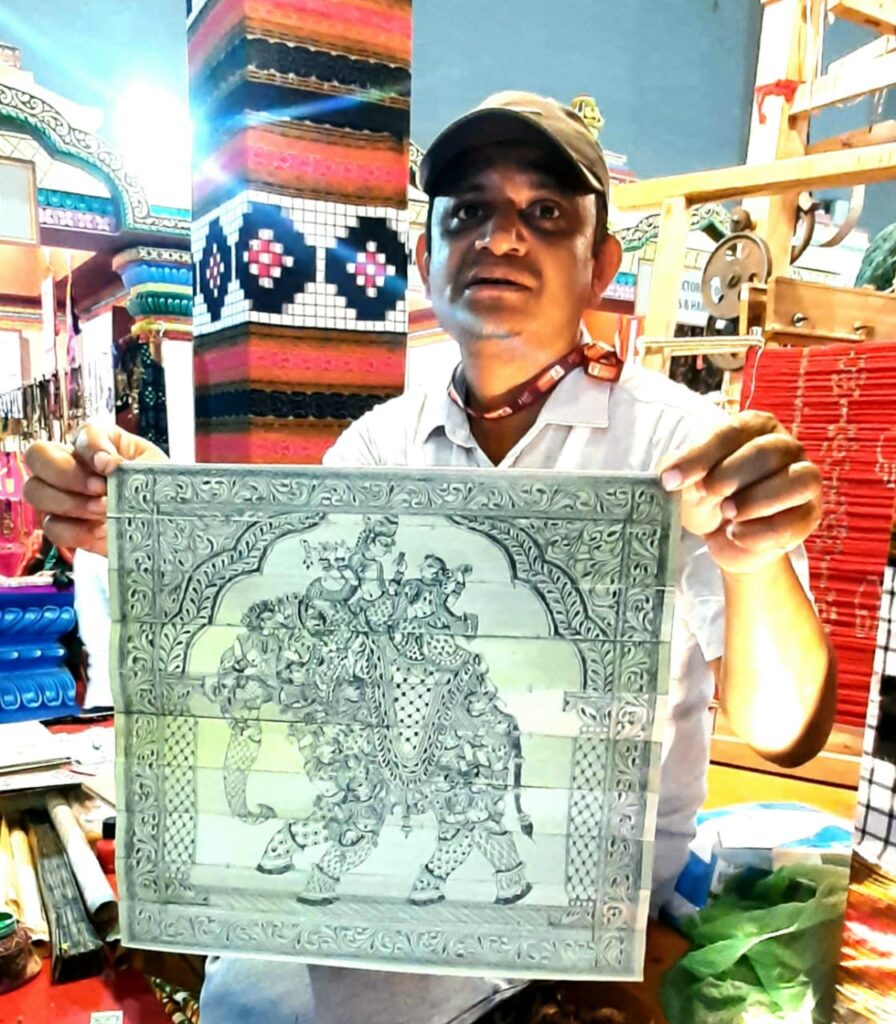One of the world’s ancient crafts that continues to flourish in the state of Odisha, India, is the art of etching and painting on palm leaves, known as Talapatrachitras. This traditional art form has evolved to new heights, becoming cherished decorations in Indian households. Its origins trace back to the inception of written communication, where messages and manuscripts were inscribed on palm leaves for dissemination. Over time, the practice evolved, incorporating the decoration of text with intricate images, giving rise to a unique and revered art form.
The enduring significance of this ethnic art is particularly evident in the regions of Puri and Cuttack, where artists, led by individuals such as Niranjan Mukhi, the proprietor of Jaydev Handicraft and a distinguished awardee in palm leaf painting, continue to uphold and advance the tradition. Trained in the intricate techniques of this art form, Niranjan is a passionate artist whose palm leaf etchings skillfully convey narratives of life, nature, and divinity.
During an insightful conversation with The Interview World at the India International Trade Fair, Niranjan shared the fascinating genesis of this ancient art, delving into the meticulous process of etching and how stories come to life on palm leaves through the language of pictures. The following are excerpts from his enlightening interview, offering a glimpse into the rich heritage and craftsmanship embedded in the timeless tradition of Talapatrachitras.
Q: Could you provide some insights into the intricacies of this product?
A: Certainly. What we have here is a captivating palm-leaf engraving, harking back to the era of Ramayan and Mahabharat. This distinctive art form goes by various names across India – Bhoj Patra and Tamra Patra in some regions, while in Odisha, it is known as Tal Patra. In an era when the concept of paper and pen was non-existent, this material served as a medium for conveying messages.
Q: Can you shed light on the timeframe required to craft the finished product you’re holding?
A: Palm-leaf engraving is a meticulous process that spans several months. Initially, we meticulously cut the palm leaf, followed by a week-long soaking period and subsequent sun-drying. The leaves are then intricately cut and skillfully stitched together. The next step involves etching the leaves using an iron needle, followed by the application of natural colors for a vibrant finish.
Q: How ancient is this art form, and what narratives find a place on these leaves?
A: This art form boasts a history spanning thousands of years, with renowned poets like Tulsidas utilizing palm leaves to transcribe the Ramayan. The stories etched onto these leaves encompass a variety, ranging from tales of human existence to narratives involving revered deities such as Krishna, Shiva, Hanuman, Mahavir, and more.
Q: Have you undergone any formal training in mastering this art form?
A: Absolutely, I underwent a comprehensive four-year training program at the esteemed Kala Vikas Parishad in Khandagiri, Bhubaneswar, Odisha. The training provides a comprehensive skill development program for artists to learn the nuances of palm leaf etching.
Q: Could you share the cost of this artifact and whether you engage in international exports?
A: The price for this artifact is approximately Rs. 20,000. Indeed, we actively participate in international trade. However, the export process is facilitated through agencies in Bhubaneswar, which procure our products for subsequent exportation.



